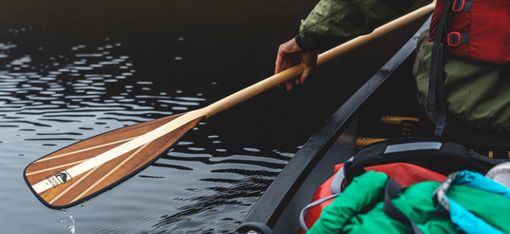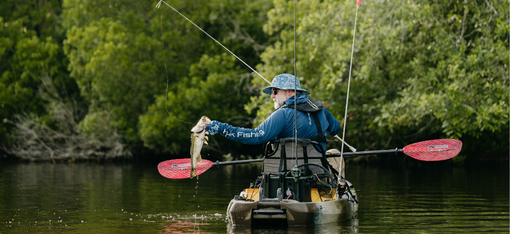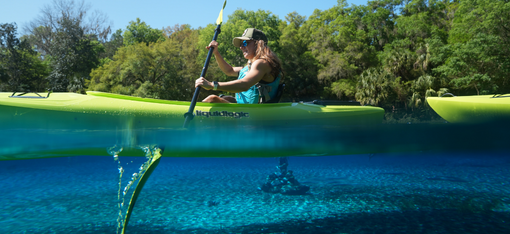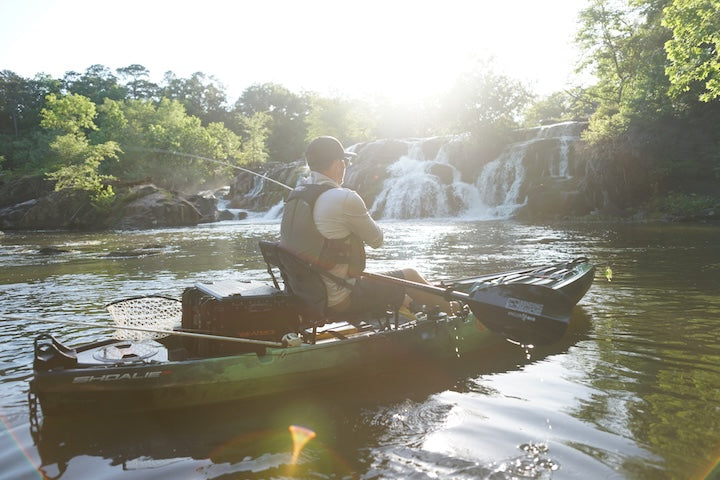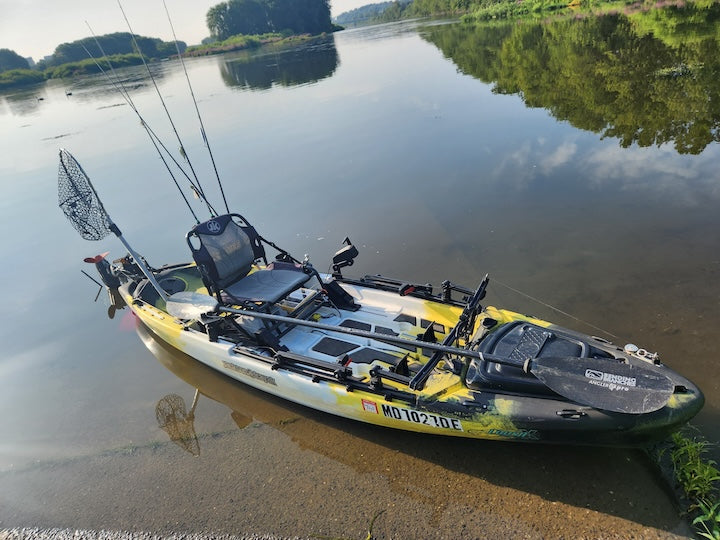The Role of Kayaks in Alaskan Subsistence Living
5-minute read
Bending Branches Ambassador Josiah Pleasant (and many of his fellow Alaskans) lives a “subsistence” life most of us think disappeared 100+ years ago. Josiah shares with us why that is, and how kayaking plays a role.

Josiah’s hunting trips are radically different from how most of us picture them in “the lower 48.” They normally involve a 10-day window of agreeable weather (not common in his area) when he and his hunting partners will fly, boat, kayak and backpack into the Alaskan wilderness.
These trips, taken as often as the weather and his time allows, provide Josiah with several benefits. The first is economic:
What is Subsistence Living Like in Alaska?
A major reason many Alaskans live a subsistence lifestyle, Josiah shares, is because the cost of living is exceptionally high. “While everybody’s food costs went up in the past couple of years with inflation, in Alaska it’s that much more because of the jet or shipping fuel it takes to get the food the 2,500+ miles to the hardy Alaskans who might like the ease of the grocery store.”
So, many Alaskans live off the land by raising their own plant foods, harvesting wild plants like berries and seaweed, and by hunting.
As the growing season is just a couple months long, Josiah limits his gardening to hardy plants like rhubarb, strawberries and kale. Much of his diet consists of the lean proteins found there, both land and sea: mountain goat, bear, moose, elk, Sitka blacktail deer, Dungeness crab, halibut and all five species of Pacific salmon.

Subsistence hunting is a major part of life for many Alaskans like Josiah
Alaska is incredibly vast and the human population is small (733,391 people, according to the US 2020 Census). So Alaska’s Fish & Game Department relies on people to help provide a balance in keeping its wildlife healthy and prospering. “We live in a place where humans are a part of the ecosystem,” said Josiah.
There are hunting seasons for everything. And in some areas, like where Josiah and his friends last hunted mountain goat, they can harvest more than one animal. These practices help ensure the remaining animals can thrive.
What Other Needs Do These Hunting Expeditions Satisfy?
Even more than the economic value of his hunting expeditions, Josiah counts on them to feed his soul. As you know, Alaska is known as one of the most beautiful places on earth. The spiritual and mental health benefits he gets from spending many consecutive days on the water and in the mountains are hugely important to him.
“It’s where I calm down,” said Josiah. “It’s where I feel centered. When I’m taking these adventures, there’s that baseline of groceries, but what’s most important is the spiritual impact on my life. And it gives me a mental health break from sitting at the computer and working that way.”
Another need these expeditions fill for Josiah is the physical fitness aspect. As many of us are, he’s on his computer for much of his daily work life. So he knows he needs that vigorous time outside to keep him in shape and physically healthy for years to come.

Mountain goats live on the mountain summits, so that’s where the hunters need to go
And vigorous it is! Beyond the initial small plane and boat travel, his average hunting trip includes up to five miles of kayaking and up to 10 miles of backpacking (that includes packing out some 200 pounds of game, hide and skull on the way back). The backpacking portions are from near sea level to 4-6,000 feet of altitude gain in the coastal mountains.
When they hit the rare alpine weather window that includes no fog, light winds and little-to-no-snowfall, his expeditions keep him in the backcountry for 8-10 days at a time. It’s not uncommon for well-laid plans to be canceled because of adverse conditions, but he and his hunting buddies are used to rescheduling when necessary.
It’s a lifestyle Josiah finds incredibly satisfying.
The Important Role of Kayaking
If you’ve ever watched “Life Below Zero” you’ll be familiar with a native Aleut named Justin Phillips. He and his family, as shown in the series, live in the Akhiok area of South Kodiak. Justin and Josiah have begun tackling joint trips together. “It’s always better to have a trustworthy partner in these adverse conditions,” said Josiah.
A typical trip includes flying into Akhiok International Airport (shown below):

Josiah at Akhiok’s International Airport
They then haul inflatable kayaks and the rest of their gear onto a 17 to 21-foot motorized aluminum boat, where they’ll cruise over 20-40 miles of coastal ocean. Josiah likes to quadruple-anchor the boat in 15-20 feet of water so it’s secure against tidal changes.
The next step is to paddle their inflatable kayaks onto the shore, or sometimes up to five miles up an estuary or other “skinny water” to the spot where they’ll begin the backpacking portion.
Once the hunt is over, they’ll pack the meat back down to their kayaks, load it up and paddle it all back to the anchored boat and out.

Josiah and Justin ready for their next expedition
Besides these trips, Josiah uses his kayak to gather seafood—crabs, halibut and more. It’s been a vital tool for his subsistence life.
Josiah knows a huge part of safety and success in these hunting and fishing trips is being able to trust his gear. “I’ll wave the Bending Branches flag until I die, because it’s a paddle I can trust,” he said. “They’ve never failed me. The lightweight component is awesome, and the carbon is awesome because it’s cold where I am. Having carbon helps my fingers not freeze right away!”
Learn More
If you’d like to learn more about Josiah and his Alaskan subsistence way of life, check these out:
- Josiah’s LinkedIn profile
- Men’s Journal article: “The Purpose of Storms”
- Paddle & Fin podcast episodes: S4E155 “Off the Water with Josiah Pleasant” and S1E7s.OG “Epic Guest Josiah Pleasant from Alaska” wherever you get your podcasts.

(All photos courtesy of Josiah Pleasant)
Do you have paddle questions our friendly Customer Service Team can help you with today? Contact them: 715-755-3405 • [email protected]
More for you...




